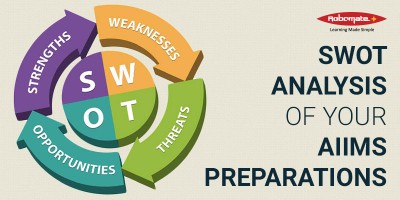State Board Commerce (XI-XII) - Test Papers
About Pollution and Tips to Protect the Environment
The World Health Organization has warned of an increase in environmental pollution in most cities around the world. Almost 90 percent of the cities that measure their pollution exceed the quality levels established by the WHO with the consequent risk of respiratory problems and other pathogens on its inhabitants.
Ideas to Protect the Environment
The urban air quality study carried out by WHO, involving 1,600 cities in 91 countries, has shown that around half of the people living in these cities are currently exposed to levels of pollution 2.5 times higher than is considered safe.
Air pollution is getting worse due to an increase in the use of fuels – by motorized means of transport and the energy consumption of offices and homes.
However, there are cities such as Copenhagen (Denmark) or Bogota (Colombia), which have improved, showing that air quality can be enhanced by implementing initiatives such as the prohibition of coal heating in buildings, the commitment to renewable energy and greater control of the transport.
A WHO report also revealed that air pollution was responsible, in 2012, for the death of some 3.7 million people under 60 years of age. For this reason, it becomes essential that everyone starts taking care of the environment. Small daily gestures are enough to take a step towards a more sustainable future to save the earth.
The first thing is to stop thinking that even if you take care of the environment, nothing will change. You, as an individual, can definitely make a difference.
We, for our part, begin by making a list of good practices to collaborate in this task of preserving something that belongs to everyone.
Good Practices to Protect the Environment
Electricity
- Turn off the light of unoccupied rooms and use energy-saving or LED bulbs, which, although more expensive, last about ten times longer, which saves money and reduces our carbon footprint.
- Paint the rooms of the house with light colors and open the blinds to take advantage of natural light and not have to make as much use of light bulbs.
- Use class A or A + energy efficiency appliances. Class A or A + refrigerator, washing machine or dishwasher saves energy and is more respectful of the environment.
- Insulate the windows to better preserve heat in winter and the cool air conditioning in summer. You will spend less, and you will be taking care of the environment.
- Dry clothes outdoors and avoid the use of dryers. You will save energy, and the clothes will smell better.
- Do not leave the television or computer in the ‘Stand By’ option and disconnect all electronic devices that you are not using, such as the charger, the blender or the toaster, etc.
Water
- Do not use the toilet thinking of it as a wastebasket and place two bottles in the cistern. You’ll save two to three and a half liters on each flush.
- Avoid leaving the water running when you wash your teeth or hands and shower instead of bathing.
- Check for water leaks in household faucets or hoses and install faucets with flow limiter. You will save up to 50% of the water consumption.
- Wash the car with a bucket and not with a hose.
- Use drip irrigation in the garden. This system is designed to supply water directly to the plants with minimum consumption. Drip irrigation systems are 90% effective, while traditional systems barely reach 60%.
- Water the garden in the evenings to avoid wasting water evaporates in the heat of the sun during the day.
Recycling
- Recycling is a smart way to save earth. Before throwing something, think about whether you can use some other way. It is not about accumulating but about taking advantage of what you have.
- If a chair or a table has broken or is very old, before buying another one, restore it.
- Separate the garbage according to organic, plastic, paper, glass, cans,
- Try using rechargeable batteries instead of disposable ones.
Transport
- Use public transportation. Car trips account for half of the total CO2 emissions from the transport sector, and most of it is generated on trips from home to work or school. Use public transport on most urban routes, such as taking children to school (you can take them by foot). You can also use public transportation or carpool or choose to buy an electric car or a bicycle.
- Avoid taking the car, especially if it is to make short trips. Whenever you can, travel by bicycle or public transport. It is a good way to exercise and contribute by not generating more pollution.
Foods
- Eat local and seasonal foods. They require less energy in their cultivation and transportation. Also, they are more economical, fresh, tasty and nutritious.
- Organic fruits and vegetables are somewhat more expensive. However, they have excellent quality, are healthier and do not abuse chemicals such as fertilizers or insecticides.
Nature
- If you go on a trip to the countryside, forest or the mountains or spend the day on a beach, be sure to collect all the garbage that may have been generated, paying special attention to glass objects, such as jars or bottles that can cause fires.
- Plant a tree in the home garden, if you have one. In summer, they cool the house, reducing the energy used for cooling.
- Return the organic waste to where it belongs – the land. Instead of sending banana peels and other organic waste to the municipal landfill, convert it into organic fertilizer. Make the plants strong and healthy, reducing the need for chemical fertilizers and pesticides.
Save earth by utilizing some of these tips to your advantage for a better tomorrow.
Difference Between IITs and Other Engineering Colleges
Introduction
Though there are numerous institutions all across India which provide engineering degree, the IIT tag is quite reputed as the highest standard of education in India for engineering. IIT is a group of engineering institutes, 23 in number, as of 2018, created under the Institutes of Technology Act, 1961 and centrally funded.
In this article, we shall elaborate on some key differences between IITs and other engineering colleges.
Differences between IITs and Other Engineering Colleges
- Resources
When we say resources, we are primarily talking about the funds that the institute amasses. Indian Institute of Technology has been known to have an annual budget that ranges from 70 to 100 Crore. These funds are not considering the individual grants that the institute brings in.
A handful of other institutes can match this number, and most engineering colleges function at about half this number.
- Network
The IITs have 23 colleges under their umbrella, spread all across this country. They all function individually and have their own governing bodies. However, they have a network among themselves through which information and resources keep flowing between different institutes. There are organisations that have also created a network of two or more institutes like the IIIT institutes, but not at a scale that IIT has been able to achieve.
The hasty expansion has however been criticised as it has resulted in a major difference in the calibre of the students accepted, and in turn, there is a difference in the quality of engineers produced. It has also resulted in a faculty shortage and a lack of a collective vision for all the 23 IITs.
- Entrance Examination and Counselling
To join a reputed engineering college in India, the exam to be given is Joint Entrance Examination (JEE) which is conducted by the Central Board of Secondary Education (CBSE) around the month of April. After JEE Mains, which is the first paper, the top tier scorers get to write the JEE Advanced paper in order to apply for any one of the 23 IIT’s.
The branch they get offered is solely based on their rank even if the person has no particular affinity towards the subject. This is a stark contrast to the counselling procedure of foreign universities where they actually look at the qualities of the individual and then, decide on a field which they would excel and most importantly, are interested in.
Other colleges in India either get their students from similar competitive exams but at a lower difficulty level, like JEE Mains, or they conduct their own examinations like VIT, Manipal or BITS.
- Placements
IIT has had a very impressive record of placements. Only a few private universities like BITs and government universities like IIITs are at par with IITs with respect to the number of companies coming in and the placement ratio of students. Many reputed companies prefer the IIT tag over as they are known for producing quality students.
- Faculty
The IITs are known to selectively recruit experts in their various fields. The teachers that are selected are seasoned professionals who are known for their extensive research work as well as practical knowledge and have published papers in scientific journals. Most other institutes hire teachers with little experience in the field, and many are known to hire their own students after a few months of passing out.
However, on the flipside, the IIT’s have a collective faculty shortage of about 34%. This is not only restricted to the newer IIT’s but also the older ones like Kharagpur and Kanpur. Compared to other engineering colleges, this is quite high.
SWOT analysis of your AIIMS Preparations
AIIMS is one of the leading medical institutions in India and across the globe. Students have to really work hard for AIIMS preparation. Students who aim to write AIIMS exam should have thoroughly studied Class 11 NCERT books and Class 12 NCERT books. These books are sufficient to clear the examination, and make sure you practice a number of mock tests. SWOT analysis is an easy way to understand your level of preparation for AIIMS. SWOT which stands for strength, weakness, opportunities and threats help you in guiding the subjects and topic which require more attention for AIIMS preparation.
AIIMS examination is about 4 subjects Botany, Zoology, Physics, Chemistry and General Knowledge. Concentrate on main subjects to score well and general knowledge questions can be answered easily if you have some knowledge on current affairs and happenings around the globe.
The candidate should prepare an analysis report subject wise and also chapter. A detailed analysis report in the form of tables will give a clear idea of subject or topic which requires you to give more time and attention. Nothing is impossible with hard work – your weaknesses can turn into your strength. The only need is to identify them and work on them with full concentration and dedication to achieve the target.
SWOT Analysis:
Strengths: Certain subjects you may find it easy to understand and study. The subjects and topics which you can answer confidently and there is no chance of going wrong, such subjects and topics are your strengths. You need only revision of such subject or topic to have hold over it. Strengths are your scoring topics or subjects in which you are confident of being correct.
Weakness: You are not confident of answering these subjects correctly. Many students may find solving Physics and Chemistry questions a little difficult. Make a list of topics which you find difficult to study and practice. Dedicate more time in solving those topics. Weaknesses can be converted into strengths provided you aim to overcome them. Solve AIIMS Entrance Previous Years’ Question Papers and work on more questions which can be expected in the upcoming AIIMS Exam.
Opportunities: These are the topics or subjects which you are not confident of answering partly. You just need to practice more on these topics. Work hard and develop confidence to answer these questions correctly. Opportunities can play a very important role in AIIMS Preparation.
Threats: These are the subjects or topics which you find difficult to answer correctly. One of the reasons for incorrect answering can be lack of understanding of the subject after repeated attempts or you might not have given sufficient time to study this topic. Whatever is the case, try to do group studies or go for private tuitions for the topics which require more attention and dedication.
International Day of Light
International Day of Light will be commemorated on every 16th May from this year. Its first inaugural ceremony will take place in Paris, France on Wednesday. International Day of Light has been recognized by UNESCO, a significant organizational body of UN.
International Day of Light marks the first laser light which was obtained by Theodore H Maiman on 16th May in the year 1960. This day will be celebrated to appreciate the vital role of light in diverse fields like sustainable development, science, culture, art, medicine.
International Day of Light will memorialize how light can play an important role in helping us achieve success in various fields of science. UNESCO focuses majorly on three prime areas; education, equality and peace.
Light was undoubtedly one of the main factors in the development of human civilization. It revolutionized society and played a key role in enabling the working of the technology. It has also transformed everyday lives of people by simplifying the use of technology. It won’t be wrong to say that light gave birth to the technology we use today.
International Day of Light emphasizes on how light will contribute to improving people’s standard of living and will be a step towards reaping the benefits of sustainable development.
Why is there a need to celebrate International Day of Light?
Several optical society members reflect on why is light an indispensable part of our everyday lives and why there is a need to celebrate International Day of Light. It is the responsibility of the society to create outreach and educate children about science in general.
Everything you need to know about International Day of Light
The main highlights of this event program would involve a range of co-curricular activities on regional, national and international levels. The International Day of Light will be organized for people of all ages across different backgrounds. Enthusiastic participation from all over the world will set to embark the dire need to save energy and utilize it judiciously. Its ultimate aim will be to emphasize on how light and its applications can play an integral role in our everyday lives. Apart from this, various renowned Noble laureates will give brief presentations on various topics on light based technologies.
In a nutshell, International Day of Light will be dedicated not only to scientific issues but also the impact of light on the society.
Rabindranath Tagore- A Maestro Who Transcends Time
Rabindranath Tagore, the eminent poet and author who composed the National Anthem of India, was a man of many parts. He is known to the world around as a Bengali poet, composer, visual artist, Brahmo Samaj philosopher, novelist, painter, and a playwright.
Rabindranath Tagore’s Early life & Education
Born to Sarada and Debendranath Tagore on 7th May 1861, in the Jorasanko mansion (the Tagore family’s ancestral home) in Calcutta, Rabindranath Tagore was the youngest in the family. Having lost his mother at a very young age and having an extensive traveler for a father, he was raised by maids and servants.
Rabindranath Tagore received his education from a public school in East Sussex, England. Rabindranath Tagore’s father intended for him to be a barrister, owing to which he was sent to England in the year 1878. He soon dropped out of University College in London and studied a few works of Shakespeare on his own. Having learned the essence of English, Irish and Scottish music and literature, he returned home to India and was married Mrinalini Devi shortly after.
In the year 1901, Rabindranath Tagore also established an experimental school at Shantiniketan in rural West Bengal to offer education to students inspired from Indian and Western traditions. He dedicated his years to this school, which later in 1921 became Visva-Bharti University. Rabindranath Tagore was also bestowed with a Knighthood award in 1915, which he refused as a protest after the Jallianwalla Bagh Massacre (Amritsar).
Rabindranath Tagore’s Contribution to Literature
Rabindranath Tagore wrote a plethora of poems, novels, and short stories. He started writing poems at the age of eight and by sixteen, he had published poems under the pseudonym of Bhanusimha. His elder brother Dwijendranath was a poet and philosopher while his sister Swarnakumari was a novelist.
Rabindranath Tagore pursued his work with renewed fervor after his wife and children passed away,.
Rabindranath Tagore’s prominent work:
- Rabindranath Tagore’s novels were the least acknowledged amongst his contributions. The novels spoke about the dangers of nationalism among other relevant social evils. His novel ‘Shesher Kobita’ made use of rhythmic passages and poems. Few other famous novels of his are ‘Noukadubi’, ‘Jogajog’, ‘Chaturanga’, ‘Gora’ and ‘Ghare Baire’.
- When it comes to poems, a few of Rabindranath Tagore’s commendable works are ‘Sonar Tori’, ‘Balaka’, and ‘Gitanjali’. In fact, he won the Nobel Prize in Literature in 1913 for ‘Gitanjali’, his best-known collection of poems.
Most of Rabindranath Tagore’s stories were inspired by the environment which he grew up in and he incorporated social issues into his stories as well. He also wrote about the fallbacks of Hindu marriages and other customs that were followed back in the day. Some of his famous short stories are ‘ Kshudita Pashan’, ‘Haimanti’, ‘Kabuliwala’ and ‘Atottju’.
When Rabindranath Tagore was in his 60s, he also started painting, which grabbed him a spot among some of India’s famous contemporary artists. Tagore’s works have been translated internationally and he has continued to leave an impression on many. His work remains relevant even today and will continue to enthrall and educate people for generations to come.
SWOT Analysis for JEE Advanced
Students can attempt for JEE Advanced after clearing JEE Mains. This means the candidate has to have a strong foundation and all the required skills to appear for the JEE exam. You need to do a swot analysis for JEE Advanced to find out how prepared you are for the exam.
Students prepare hard for upcoming exams; almost all students will use the same reference material. The differentiating feature between candidates comes with the memory power and tips and tricks to solve and verify solutions in the shortest time. Hard work and full concentration towards exams gives you confidence and ability to present yourself in the best form for exam.
SWOT analysis is basically a business term used by marketing team to determine its penetration and survival in the market. SWOT analysis for JEE Advanced can be applied for JEE studies to find out if you are strong in one subject and weak in another.
SWOT stands for
S – Strength
W – Weakness
O – Opportunity
T – Threats
SWOT Analysis for JEE Advanced – Strengths:
Identify the subject(s) which is easy for you and sure of giving correct answers. Few topics in each subject might be easy for you and require less time and efforts for solving. Make a list of such topics which assure you prefect score. Do proper revision and don’t lose grip over this subject. Hope you’ve now got a grip on the strengths part of SWOT analysis for JEE advanced.
SWOT Analysis for JEE Advanced – Weaknesses:
This is opposite to strength and requires lots of efforts and concentration to have grip over these topics or subjects. Again make a list of topics which you are not sure about solving them all. Dedicate more time to these subjects. Try to have combine studies with your friends or opt for private tuitions to have grip over these topics. Converting weakness to strengths is difficult but not an impossible task. Each correct answer is very important to get a good score in JEE Advanced.
JEE Advanced – Opportunities:
You can list down the chapter in which you are not confident of answering correctly but can work on it and get a better score. Dedicate more time and solve as many questions as possible. Opportunities can be converted into strengths. Hope you can now apply the opportunities you can find out in SWOT analysis for JEE Advanced.
JEE Advanced – Threats:
These are the topics in which you are confident of giving incorrect answers! Make a list of such topics and the questions. Identify the questions which have been given in the previous papers. Try to put some efforts on important topics which can be expected. Solving JEE Advanced Previous Years Question Papers and mock test helps in identifying the topics in which you are not confident but still can expect some question(s) from the topic in the upcoming JEE Advanced. Do your best to change your threats into opportunities.
Conclusion:
Based on the above SWOT analysis for JEE Advanced you can improve your skills on weakness and opportunities and work on threats. Pen down SWOT analysis on a chart, this will you a constant reminder of strength, weakness, opportunities and threats. Your SWOT analysis should be clear and detailed one. Make it in the form of a table chapter wise for easy assessment. SWOT analysis helps you in determining your position for exam preparation. Work hard to achieve your goals.
All the best!














